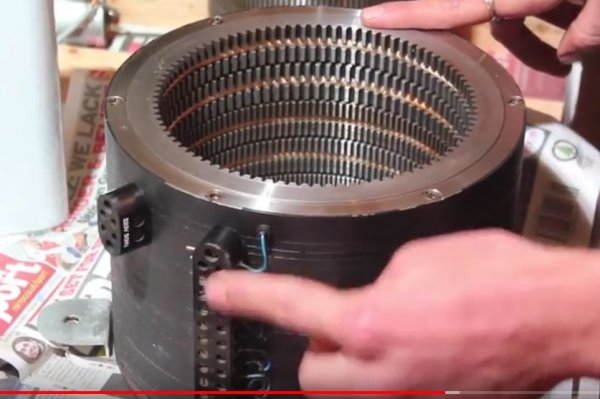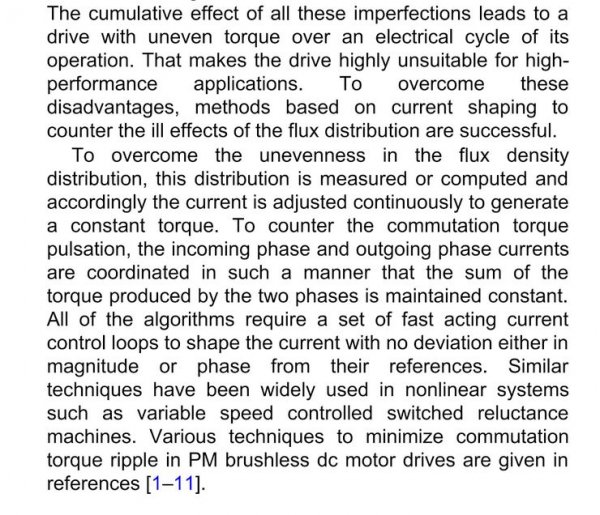Yes, and as far as I remember no one complained that he was able to listen to "torque ripple effects" in the older design.

Unfortunately many times people listen with their eyes - it is why many times manufacturers hide technical details, avoiding audiophile stereotypes. Did you read in this forum anyone complaining that Mike NVS turntable suffers from "torque ripple effects"? Why does Kodo refer to its excellent DD motor as "three phase motor driven by a very sophisticated controller" (most brushless motors fall under this umbrella)?
IMHO the fundamental aspects of sound quality rely on the implementation. GPA seem to be masters in the control software. This extreme expertise makes generalization to inferior products almost impossible. And we should not mix our preference with performance. Just MHO, YMMV.
Well, the original was not that well received by Fremer at least. Our own Ked heard the 1.5 (or original) and was also not impressed. Not sure how you hear a motor buried in the chassis "with your eyes". As, I said, it was never clear whether GPA was using a cored or coreless motor but it seems that a motor upgrade in V2.0 did indeed go to a coreless design. I hear a problem with all of the Technics tables from the past (note: I haven't heard the SP10Mk3 but the earlier ones).
Also, how do you know the Kodo has an excellent motor? Have you heard that TT? From the description it is like you said but that also means it is likely not coreless. We will have to speculate on how that would sound...I would argue it would sound better if they too went coreless.
The mighty Caliburn, even though it was belt drive, was also using a coreless motor, according to the manufacturer (I talked with him many years ago in Munich). The latest Continuum uses a BRUSHED DC coreless motor...most interesting choice...
"The Caliburn uses a patented motor coil technology similar in principle to a voice coil.
By working with the underlying technology we reduced the mechanical and RF noise to a minimum resulting in a super quiet motor which does not pulse or cog.
Housed in a solid block of damped alloy with precision-engineered bearings the motor delivers new benchmark levels of performance and motion control.
When compared to the most expensive turntable motors the “true zero cogging” technology we employed delivers superior audio results."
You can get similar motors that are printed armature motors, which are pancakes, but don't have to be as the Continuum one is not.
Interestingly, this is exactly what Brinkmann has now done with their belt drive motor, the Sinus. It is a spinoff of their DD Oasis and Bardo and they realized clear gains even with belt-drive going coreless.
Last, but not least, Nakamichi went to direct drive with their cassette decks, the Dragon and ZX-9, using advanced coreless designs because they sounded better (they are still revered to this day). My colleague has a ZX-9 and I can tell you that is one awesome cassette deck...rivals pretty good R2R tape sound (He has a good one of those too).
I think the TT engineering world in the west largely ignored these lessens and their return to DD still has a taint that the motor itself is less important than the control circuits...but it isn't and now GPA seems to get that with V2.0. I have seen 20K+ belt drives with simple AC synchronous motors and a synthesized AC power, if you are lucky...tragic really and you can hear it sonically.
You can believe what you want about the importance of the motor technology, I am not fooled and it seems the serious designers have realized what the Japanese figured out nearly 40 years ago. It matters...a lot and those on this forum considering DD, or even a belt drive should look very critically at the motor type being implemented before laying down their hard earned money. A fancy control system will not solve all issues with a motor that are inherent in the motor design...just like negative feedback won't fix what is inherently wrong in an amp design...things have to be solved on a fundamental level not cleaned up later downstream.






